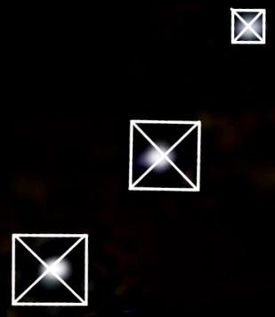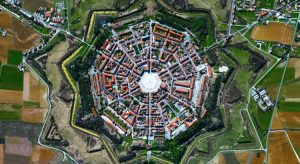The
Orion correlation theory is a fringe hypothesis in alternative
Egyptology. It posits that there is a correlation between the location
of the three largest pyramids of the Giza pyramid complex and Orion's Belt of the constellation Orion, and ...
Jan 11, 2013 - Why were ancient civilizations around the world so focused on the Orion constellation?
While scientists site many earthly connections, researchers suggest
this point in the night sky may have been a so-called Stargate, or entry
point, for alien life forms. If extraterrestrials have ...
May 19, 2017 - Many of the architectural marvels of the ancient world bear striking ... even though they were built by civilizations that were separat... ... pyramids that are aligned with the constellation of Orion's belt. ... Aired on May 05, 2017.
Orion correlation theory
Representation
of the central tenet of the Orion Correlation Theory: the outline of
the Giza pyramids superimposed over a photograph of the stars in Orion's
Belt. The validity of this match has been called into question by
Hancock's critics.
It posits that there is a correlation between the location of the three largest pyramids of the Giza pyramid complex and Orion's Belt of the constellation Orion, and that this correlation was intended as such by the original builders of the Giza pyramid complex. The stars of Orion were associated with Osiris, the god of rebirth and afterlife by the ancient Egyptians.[2][3][4] Depending on the version of the theory, additional pyramids can be included to complete the picture of the Orion constellation, and the Nile river can be included to match with the Milky Way galaxy. The theory was first published in 1989 in Discussions in Egyptology, volume 13. It was the subject of a bestseller, The Orion Mystery, in 1994,[5] as well as a BBC documentary, The Great Pyramid: Gateway to the Stars (February 1994), and appears in some new-age books.[6][7]
History
The Orion correlation theory was put forward by Robert Bauval in 1983. One night, while working in Saudi Arabia, he took his family and a friend's family up into the sand dunes of the Arabian desert for a camping expedition. His friend pointed out Orion, and mentioned that Mintaka, the dimmest and most westerly of the stars making up Orion's belt, was offset slightly from the others. Bauval then made a connection between the layout of the three main stars in Orion's belt and the layout of the three main pyramids in the Giza pyramid complex. He published this idea in 1989 in the journal Discussions in Egyptology, volume 13. The idea has been further expounded by Bauval in collaboration with Adrian Gilbert (The Orion Mystery, 1994) and Graham Hancock (Keeper of Genesis, 1996), as well as in their separate publications. The basis of this theory concerns the proposition that the relative positions of three main Ancient Egyptian pyramids on the Giza plateau was by design correlated with the relative positions of the three stars in the constellation of Orion which make up Orion's Belt— as these stars appeared in 10,000 BC.Their initial ideas regarding the alignment of the Giza pyramids with Orion ("…the three pyramids were a terrestrial map of the three stars of Orion's belt"— Hancock's Fingerprints of the Gods, 1995, p. 375) are later joined with speculation about the age of the Great Sphinx (Hancock and Bauval, Keeper of Genesis, published 1996, and in 1997 in the U.S. as The Message of the Sphinx). According to these works, the Great Sphinx was constructed c. 10,500 BC (Upper Paleolithic), and its lion-shape is maintained to be a definitive reference to the constellation of Leo. Furthermore, the orientation and dispositions of the Sphinx, the Giza pyramids and the Nile River relative to one another on the ground is put forward as an accurate reflection or "map" of the constellations of Leo, Orion (specifically, Orion's Belt) and the Milky Way respectively. As Hancock puts it in 1998's The Mars Mystery[8] (co-authored with Bauval):
...we have demonstrated with a substantial body of evidence that the pattern of stars that is "frozen" on the ground at Giza in the form of the three pyramids and the Sphinx represents the disposition of the constellations of Orion and Leo as they looked at the moment of sunrise on the spring equinox during the astronomical "Age of Leo" (i.e., the epoch in which the Sun was "housed" by Leo on the spring equinox.) Like all precessional ages this was a 2,160-year period. It is generally calculated to have fallen between the Gregorian calendar dates of 10,970 and 8810 BC.[8]The allusions to dates circa 12,500 years ago are significant to Hancock since this is the era he seeks to assign to the advanced progenitor civilization, now vanished, but which he contends through most of his works had existed and whose advanced technology influenced and shaped the development of the world's known civilizations of antiquity. Egyptology and archaeological science maintain that available evidence indicates that the Giza pyramids were constructed during the Fourth dynasty period (3rd millennium BC[9]), while the exact date of the Great Sphinx is still unclear. Hancock does not dispute the dating evidence for the currently existing pyramids, but instead argues that they may have been an architectural evolution of sites whose origin and cultural significance dated back some eight thousand years before the current monuments were built —since the Orion correlation theory argues they are oriented that way— which, it is implied, provides further evidence for the influence of astronomical, mathematical, and historical knowledge that might not have been passed down to the pyramids’ builders.
Critique
Arguments made by Hancock, Bauval, Anthony West and others concerning the significance of the proposed correlations have been critiqued.Among these are critiques from two astronomers, Ed Krupp of Griffith Observatory in Los Angeles and Tony Fairall of the University of Cape Town, South Africa. Using planetarium equipment, Krupp and Fairall independently investigated the angle between the alignment of Orion's Belt and north during the era cited by Hancock, Bauval, et al. (which differs from the angle seen today or in the third millennium BC, because of the precession of the equinoxes). They found that the angle was somewhat different from the "perfect match" thought to exist by Bauval and Hancock in the Orion Constellation Theory. They estimate 47–50 degrees per the planetarium measurements, compared to the 38-degree angle formed by the pyramids.[10]
Krupp pointed out that the slightly bent line formed by the three pyramids was deviated towards the north, whereas the slight "kink" in the line of Orion's Belt was deformed to the south, and to match them up one or the other of them had to be turned upside-down.[11] Indeed, this is what was done in the original book by Bauval and Gilbert (The Orion Mystery),[12] which compares images of the pyramids and Orion without revealing that the pyramids’ map had been inverted.[13] Krupp and Fairall find other problems with their arguments, including noting that if the Sphinx is meant to represent the constellation of Leo, then it should be on the opposite side of the Nile (the "Milky Way") from the pyramids ("Orion"),[10][11] that the vernal equinox c. 10,500 BC was in Virgo and not Leo,[10] and that in any case the constellations of the Zodiac originate from Mesopotamia and were completely unknown in Egypt until the much later Graeco-Roman era.[13] Ed Krupp repeated this "upside down" statement in the BBC documentary Atlantis Reborn (1999).
Bauval stated that some astronomers including Archie Roy of the University of Glasgow have rejected Krupp's argument. Krupp presented a counterpoint to the objections, that Bauval stated had been made by the late Dr. Roy, who was a Professor Emeritus of Astronomy at Glasgow University (including the accusation that Bauval and Gilbert deliberately inverted the pyramid map).[clarification needed][13][not in citation given].[14]
In a ruling by the Broadcasting Standards Commission (UK), the committee ruled in favour of Robert Bauval that Krupp's statement that maps were placed upside down was "unfairly" presented in the BBC documentary Atlantis Reborn, without including Bauval's filmed response.[1] Bauval and Hancock's filmed responses to Krupp's statements were included in the modified version of the documentary Atlantis Reborn Again shown on 14 December 2000.
Andrew Collins and Rodney Hale have proposed an 'alternative correlation theory' using three bright stars in the Cygnus constellation.[15] They argued that not only did the groundplan fit the sky but also the stars can be observed setting down on the corresponding pyramids. Their proposal has also been contested.[16]
Leo and the Sphinx
The Great Sphinx is a colossal statue with the face of a man and the body of a lion. Carved out of the surrounding limestone bedrock, it is 57 metres (187 ft) long, 6 metres (20 ft) wide, and has a height of 20 metres (66 ft), making it the largest single-stone statue in the world. The Great Sphinx is one of the world's largest and oldest statues, yet basic facts about it such as the real-life model for the face, when and why it was built, and by whom, are debated. These questions have collectively earned the title "Riddle of the Sphinx", a nod to its Greek namesake, although this phrase should not be confused with the original Greek legend.The Great Sphinx is commonly accepted by Egyptologists to represent the likeness of King Khafra (also known by the Hellenised version of his name, Chephren)[17] who is often credited as the builder as well. This would place the time of construction somewhere between 2520 BC and 2494 BC. Because the limited evidence giving provenance to Khafra is ambiguous, the idea of who built the Sphinx, and when, continues to be the subject of debate. An argument put forward by Bauval and Hancock to support the Orion Correlation Theory is that the construction of the Great Sphinx was begun in 10,500 BC; that the Sphinx's lion-shape is a definitive reference to the constellation of Leo; and that the layout and orientation of the Sphinx, the Giza pyramid complex and the Nile River are an accurate reflection or "map" of the constellations of Leo, Orion (specifically, Orion's Belt) and the Milky Way, respectively.[18]
A date of 10,500 BC is chosen because they maintain this is the only time in the precession of the equinoxes when the astrological age was Leo and when that constellation rose directly east of the Sphinx at the vernal equinox. They also suggest that in this epoch the angles between the three stars of Orion's Belt and the horizon were an "exact match" to the angles between the three main Giza pyramids. These propositions and other theories are used to support the overall belief in an advanced and ancient, but now vanished, global progenitor civilization.
The theory that the Sphinx is actually far older has received some support from geologists. Most famously, Robert M. Schoch has argued that the effects of water erosion on the Sphinx and its surrounding enclosure mean that parts of the monument must originally have been carved at the latest between 7000–5000 BC.[19] Colin Reader has suggested a date only several hundred years prior to the commonly accepted date for construction. These views have been almost universally rejected by mainstream Egyptologists who, together with a number of geologists including James Harrell, Lal Gauri, John J. Sinai, and Jayanta K. Bandyopadhyay,[20][21] stand by the conventional dating for the monument. Their analyses attribute the apparently accelerated wear on the Sphinx variously to modern industrial pollution, qualitative differences between the layers of limestone in the monument itself, scouring by wind-borne sand, or temperature changes causing the stone to crack.
References
- James A. Harrell, "The Sphinx Controversy: Another Look at the Geological Evidence," KMT: A Modern Journal of Ancient Egypt, Vol. 5, No. 2 (Summer 1994), pp. 70–74.
External links
| Wikimedia Commons has media related to Orion Correlation Theory. |














No comments:
Post a Comment